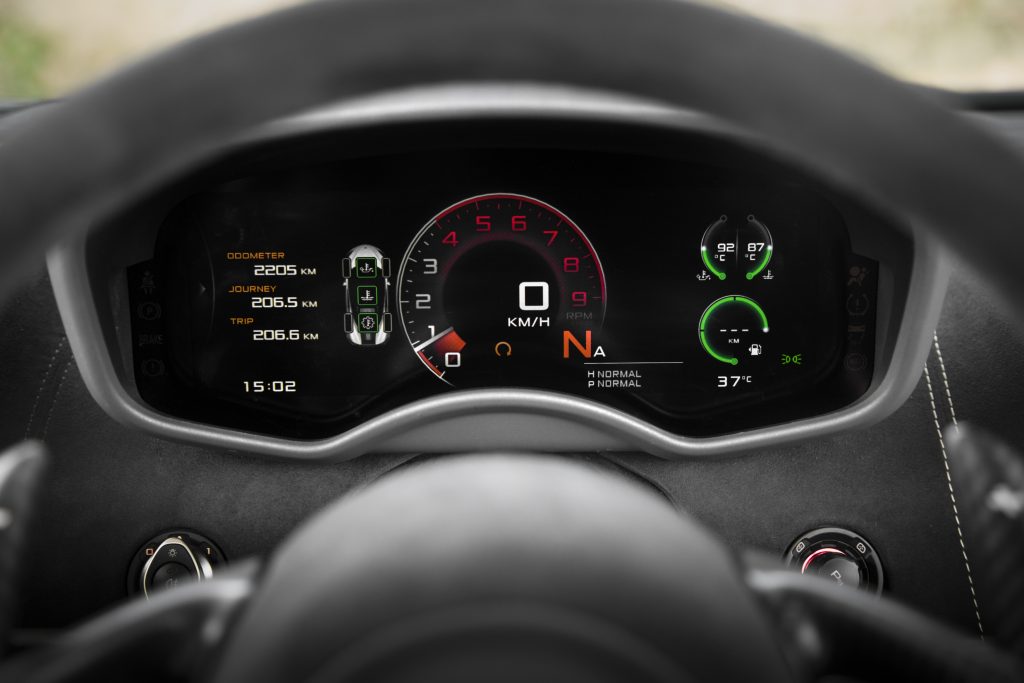Paul Murrell tests the 2019 McLaren 570S Spider with pricing, specs, ride and handling, safety, verdict and everything the over-50 driver needs to know.
Summary: While many buyers will head straight for “the usual suspects” (Porsche, Ferrari, Lamborghini, Maserati and Audi), there’s a lot to be said for taking a road less travelled.
2019 McLAREN 570S SPIDER
Pricing: From $435,750 (plus ORC) (that’s a lot more than anyone else has to pay, almost anywhere in the world)
Warranty: Three-years, unlimited km
Safety: not ANCAP tested
Engine: 3.8-litre dohc twin turbo V8
Power: 419kW at 7500rpm
Torque: 600Nm at 5000-6500rpm
Transmission: Seven-speed dual clutch automatic (one of the sweetest you’ll ever use)
Drive: rear-wheel drive
Body: 4530mm (long); 2095mm (wide); 1202mm (high)
Cargo area: 150 litres (202 litres with roof raised) (surprisingly usable)
Weight: 1498kg (lighter than an Audi R8 Spyder, Lamborghini or Porsche 911 Turbo S)
Tyres: 225/35R19 (front), 285/30R20 (rear) Pirelli P-Zero HN
Spare wheel: none
Turning circle: 12m
Fuel tank: 72 litres
Thirst: 10.7/100km (combined, 98 RON)
seniordriver consumption: a lot more than the official figure (surely you didn’t think we’d be driving for economy!)
[review]
THERE’S SOMETHING UNDENIABLY appealing about a supercar, but don’t, for a moment, imagine it will ever be a rational decision. In fact, the McLaren 570S Spider could be used as an everyday commuter, but we very much doubt many who buy one will subject it to such an indignity.
No, this is a car you keep covered up in a heated garage, and take out when you need to blow some cobwebs out of your brain.
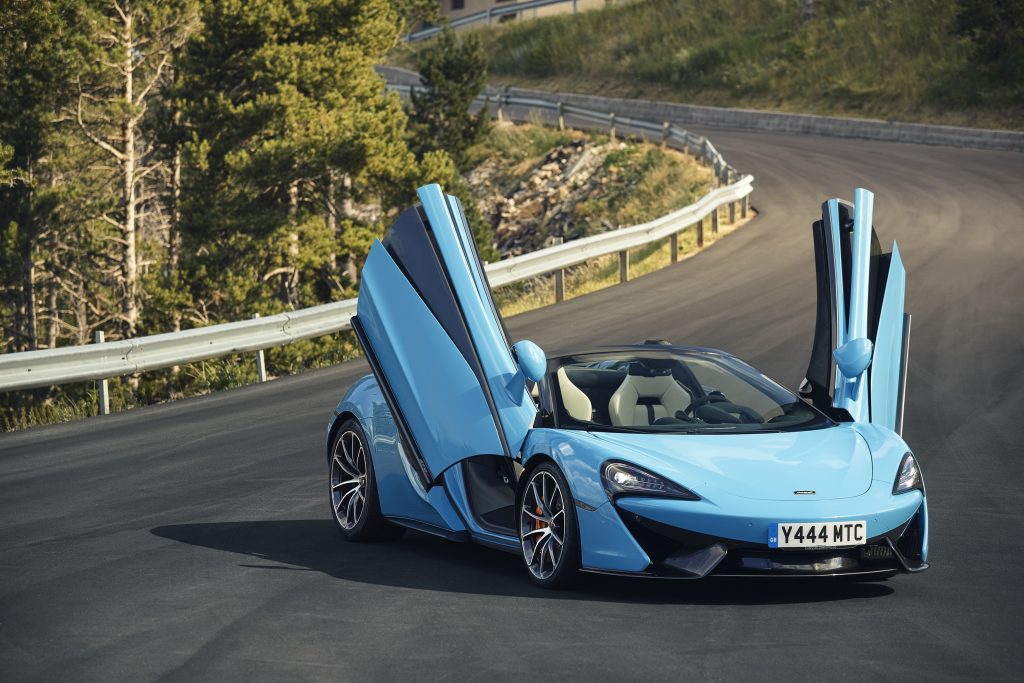
Distinctive design, unlike anything else.
While every supercar follows broadly similar design philosophies, it’s amazing just how much individuality the designers manage to achieve.
McLaren chief designer Rob Melville says the surfaces “express the way the air moves around the car”. I’d say that’s designer-speak for “aerodynamic”. However, he gets paid a lot more than I do, so we’ll take his word for it that the lower edge of the channel running through the door mimics the way the airstream comes off the rear edge of the front tyre. The doors feature floating “tendons” (the door release button hides behind them) and the flying buttresses funnel air around the cabin and over the vented decklid to extract hot air from the engine bay.
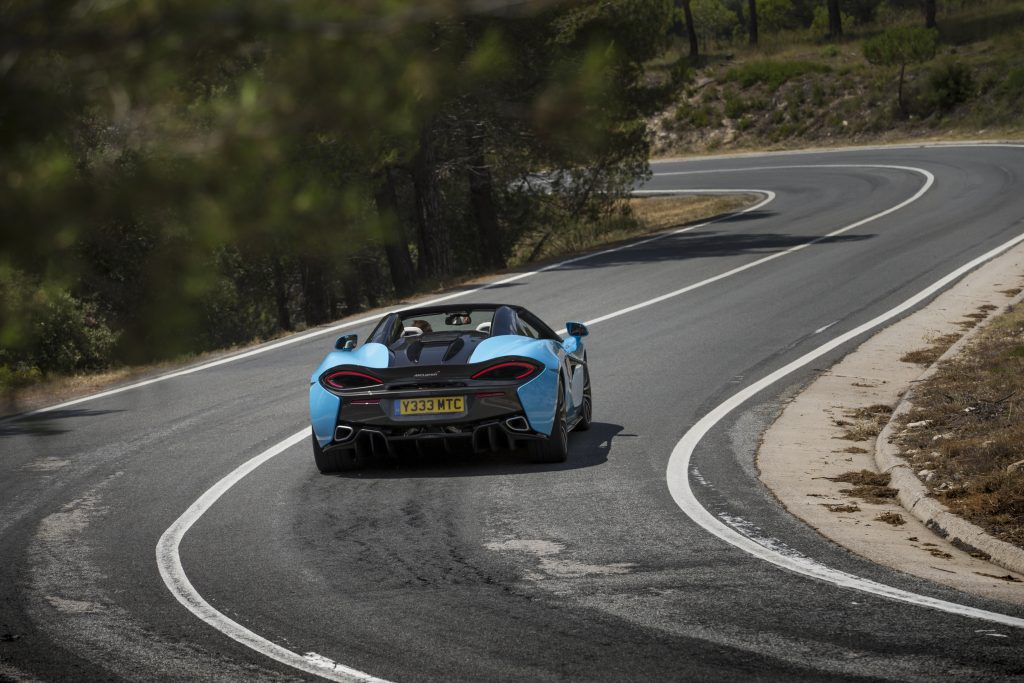
Carbon fibre to the max.
McLaren has made the decision to create all models using a carbon-fibre passenger cell sandwiched between aluminium substructures. They call it MonoCell II. While the sills in the 650S are wide and tall, those in the 570S have been slimmed down to make it easier to enter and exit (although it can still be a considerable challenge if you’ve had a recent hip replacement, and ladies in short skirts will find it impossible to make a graceful exit).
The tub creates an extraordinarily strong and stable platform. As a result, lopping off the roof has had virtually no effect on the 570S’s structural rigidity and requires no additional bracing. The only additional weight over the coupe comes from the motors required to raise and retract the roof, an additional 46 kg we are told.
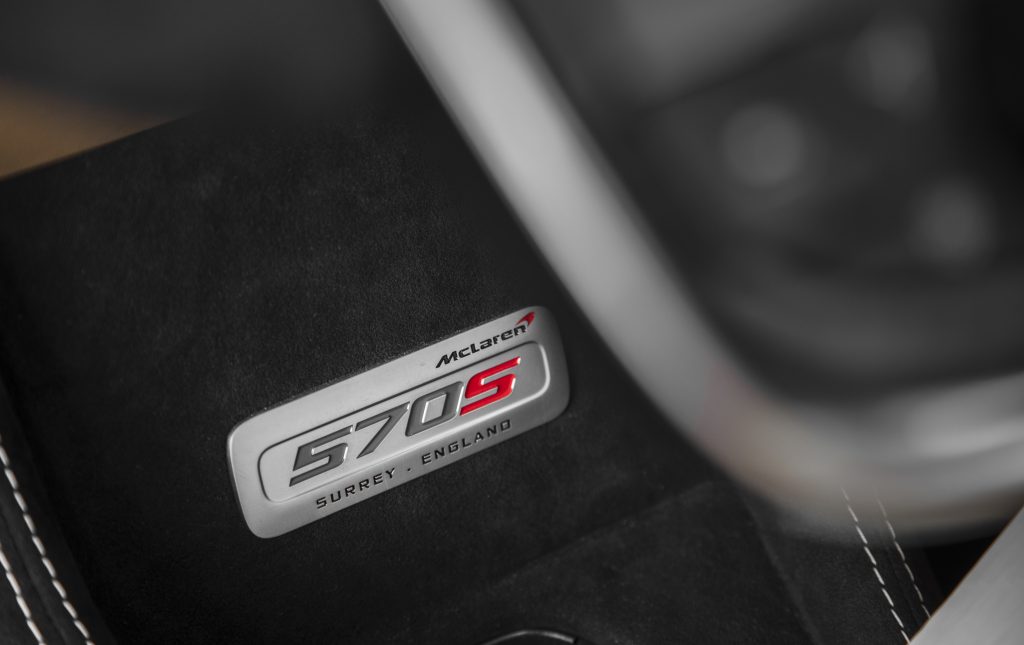
A little McLaren background.
While most buyers of other supercars such as Lamborghini, Ferrari, Maserati, Porsche et al will be familiar with the illustrious histories of their favourite marques, many will be less familiar with the history of McLaren.
New Zealander Bruce McLaren was a very capable Formula 1 driver for British team Cooper before starting his own team in 1963, making it the second oldest team (after Ferrari) currently competing in Formula 1. The team’s first F1 victory came in 1968 in Belgium and through 1967 to 1971, they dominated the US Can-Am Series and won the Indianapolis 500 in 1972, 1974 and 1976.
In 1988, McLaren decided to expand into building road cars and aimed high. The resulting F1 sports car, released in December 1993, has been described as the “the finest sports car the world has ever seen”. If you’re thinking of buying one of the spectacular three-seaters (the driver sits in the middle), finding one won’t be easy – just 104 were produced and only 64 were road-legal.
Their second road car, the SLR, was created in collaboration with Mercedes-Benz. It was a spectacular car, but nowhere near the lofty technical and innovative tour de force that was the F1.
In 2010, McLaren formed McLaren Automotive to launch the MP4-12C. It wasn’t an entirely convincing car, and combined with McLaren’s short history of producing road cars, hardly set the world on fire. The MP4-12C was re-engineered to become the P1 and not long after, McLaren launched its three-tiered range, the Super Series 650S and the 675LT, followed by the Sport Series, featuring the 570S.
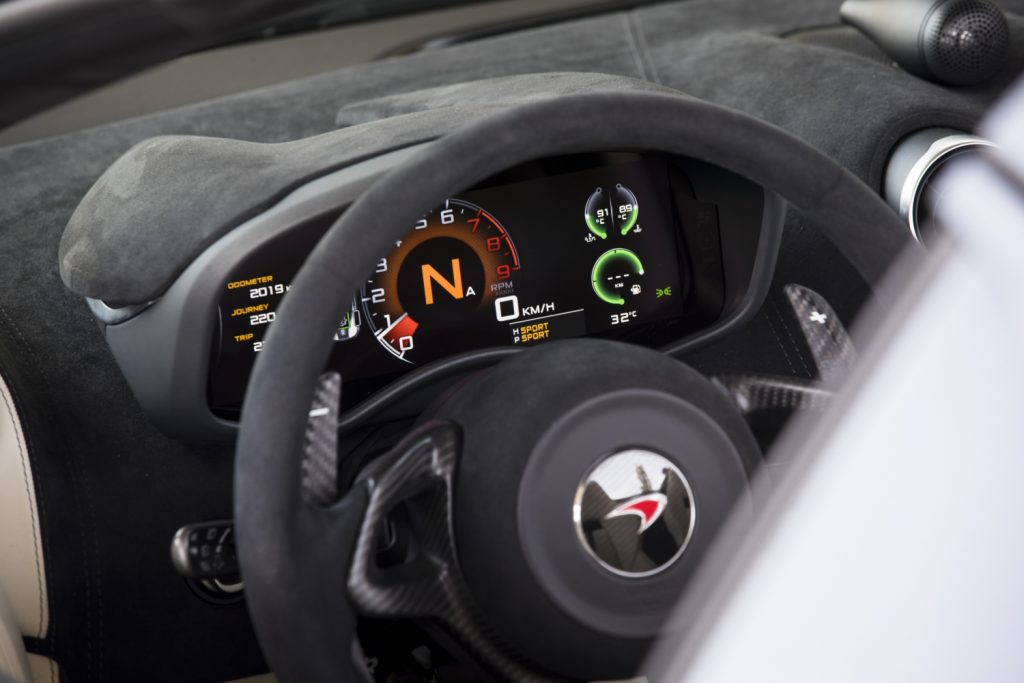
Is it a Porsche beater?
The 570S is supposed to tackle the Porsche 911 as an everyday-usable supercar. According to people we’ve spoken to, many buyers are moving across from Porsche 911 Turbos, but it’s fair to assume that McLaren buyers will be a little more knowledgeable, and perhaps a little less badge-driven.
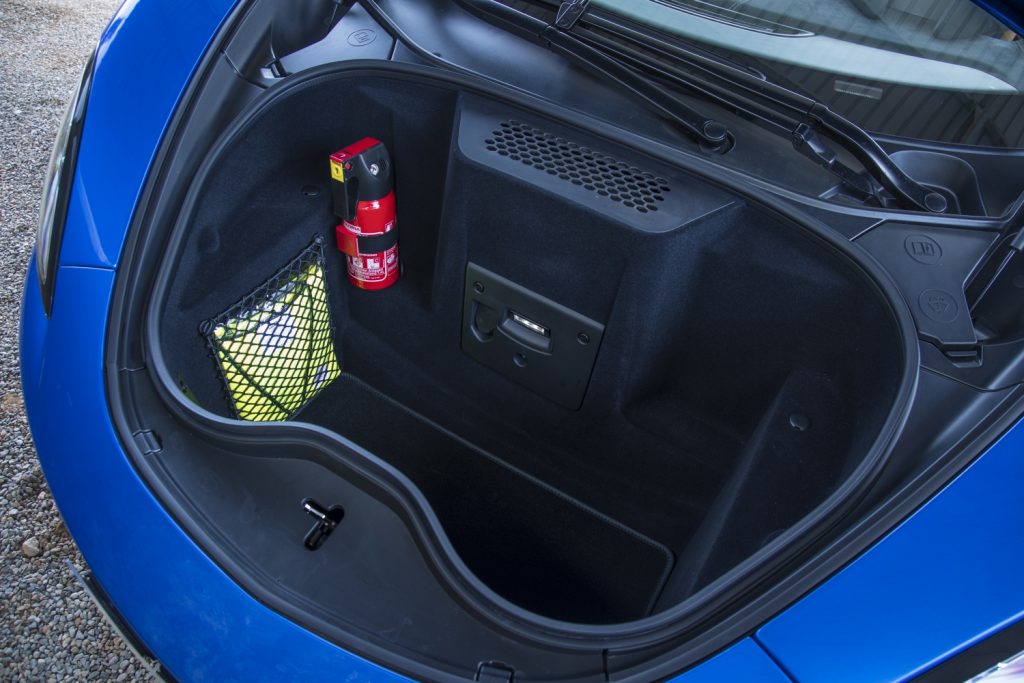
An engine with a history.
McLaren’s twin turbo V8 first appeared in the MP4-12C and has made an appearance in every McLaren since. It is clearly a very versatile engine – in the P1 with electric assistance, it had an output of 674kW. In the 720S it puts out 530kW and in the Senna it manages 575kW. Codenamed the M838T, the engine was co-developed by McLaren with UK engineering firm Ricardo, who also produce it.
For the 570S, McLaren and Ricardo made changes to almost one third of components, so even though all McLarens technically use the same engine, it is different in each model.
Unfortunately, if you’d like to stand back and admire this technical highlight, you can’t; like Porsche’s Cayman, for example, the engine is tucked away, inaccessible and only visible through the grille over the rear deck.
The seven-speed twin clutch transmission was co-designed with Graziano and is the only choice offered in the 570S. It’s no reason for complaint, however, as it’s one of the most accomplished gearchanges you’ll ever have the pleasure of using.
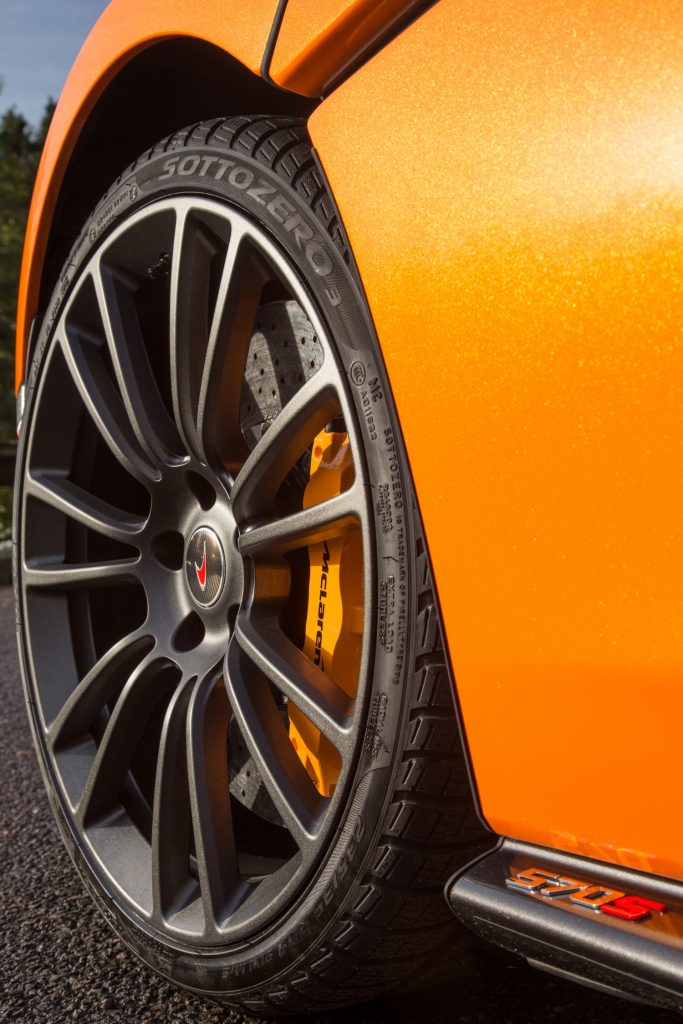
Light blue touch paper…
The 570S starts with gargly rumble, quite unlike what you will hear from a Ferrari, a Maserati or a Porsche. Once you hit the start button, you’re in Normal mode until you press the Active button, at which time you can choose modes to independently control both handling and engine settings using two rotary switches.
McLaren has almost defiantly followed its own path. Instead of a complicated, expensive and heavy diff, the 570S uses a wide open differential, sorting out traction using brake steer, controlled by the on-board computer. Another departure from expected practice is the use of hydraulically-assisted steering rather than the more usual electric assistance.
Once in the car, you pull down the theatrical dihedral scissor doors and appreciate just how untheatrical everything else is. The layout is generally sensible and ergonomic (not something you can always say about supercars) – although there are some suitably frustrating quirks such as the mirror adjustment control being hidden away behind the steering wheel, a sat nav screen that’s impossible to see when the roof’s down because of the glare, seat adjustment buttons tucked far down between the seat and the console (and out of sight, so you have to do everything by Braille); and the extra-cost (but absolutely essential) button to raise the suspension so you can safely traverse speed humps requires a number of steps to activate, and then it seems to take an age to get the car into the raised position (all of which you’ll happily put up with once you learn the cost of a replacement front spoiler).
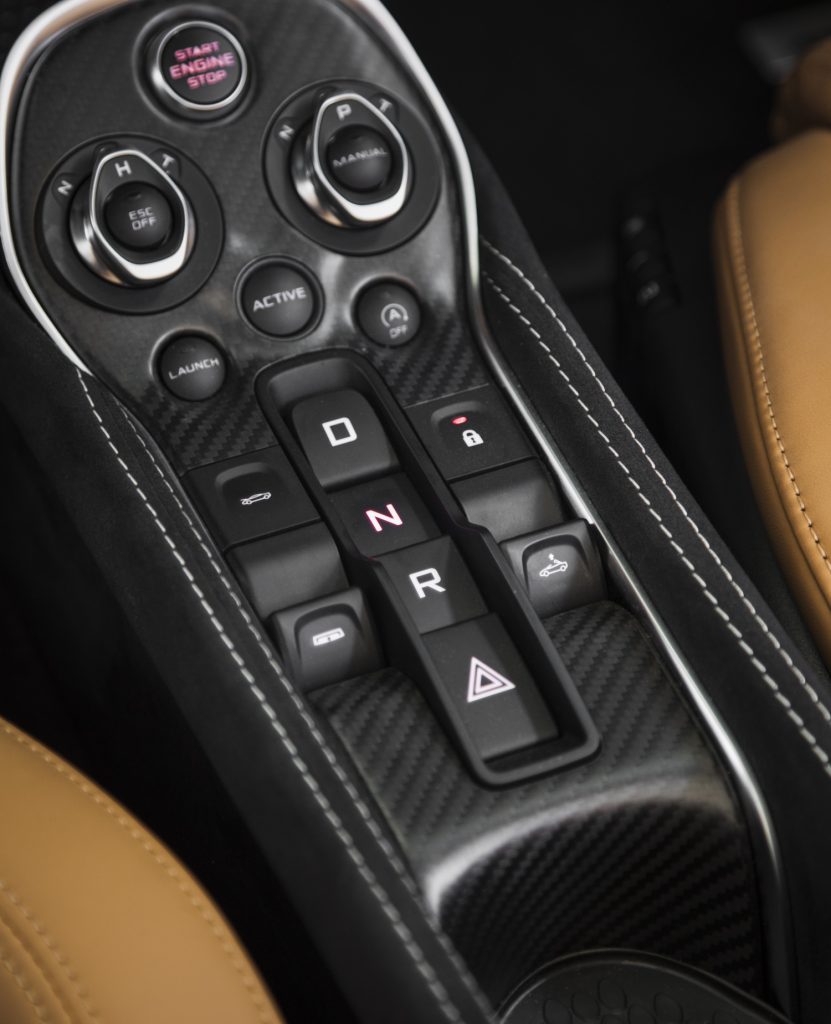
For a car taking aim at the Porsche 911, steering accuracy is vital, and the 570S doesn’t disappoint, responding to every input. And, praise be, a steering wheel completely free of buttons. You delight in making the most of the surge of power and torque, flipping the rocker-action paddle shifters for the sheer joy of hearing (and feeling) that engine respond, and the steering virtually telegraphs what’s happening under the front wheels (including letting you know about every cat’s-eye reflector you have driven over). There’s a millisecond of lag low down, but once past that, the performance is simply jaw-dropping.
Despite this, the ride is civilised and compliant, apart from the occasional broken tarmac judder of feedback. The body itself, however, is rock solid and reassuringly free of squeaks or rattles.
The 0-100km/h time comes up in just 3.2 seconds, exactly the same as in the coupe. It’s only when you press on to 200km/h that the convertible falls away – by a whole one tenth of a second – hitting the double ton mark in 9.6 (rather than 9.5) seconds. Top speed with the roof up is also the same as the coupe at 328km/h, but “only” 315 with the roof down. There’s surprisingly little buffeting with the roof down, and our preference was for roof down, rear window lowered, but side windows up.
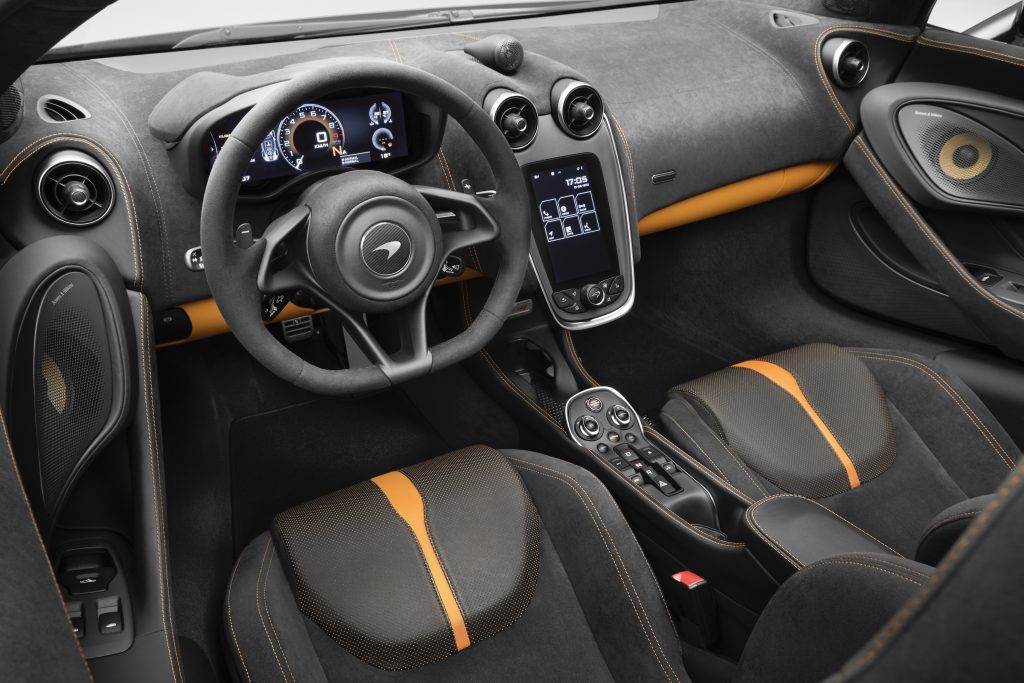
One huge disappointment.
No, it’s nothing to do with the way the car has been designed or built, or the way it performs; instead, it’s the price we in Australia are being asked to pay for it. The US price is $US191,900 ($AU270,579 at the current rate of exchange). The UK price is $AU235,621. In South Africa, the 570S Spider is $AU310,400. Closer to home, the New Zealand price is $325,440. So why is the Australian price $435,750 (plus on road costs)?
Our import duties and the iniquitous Luxury Car Tax are to blame. And it stinks.
Throw in a few almost essential options, and the price skyrockets even further. The Security Pack (vehicle lift, front and rear parking sensors, rear view camera, volumetric alarm upgrade and car cover) adds $10,940. MSO-defined paint is $16,360, sports exhaust $9,020, soft close doors $1660, Alcantara trim $5080, Alcantara steering wheel $1360, optional wheels can easily add another $10,000, special colour brake calipers are $2400. And then there’s stamp duty around $27,000, dealer delivery of $15,000 and don’t forget registration and insurance. Suddenly, you’re closing in on $550,000.
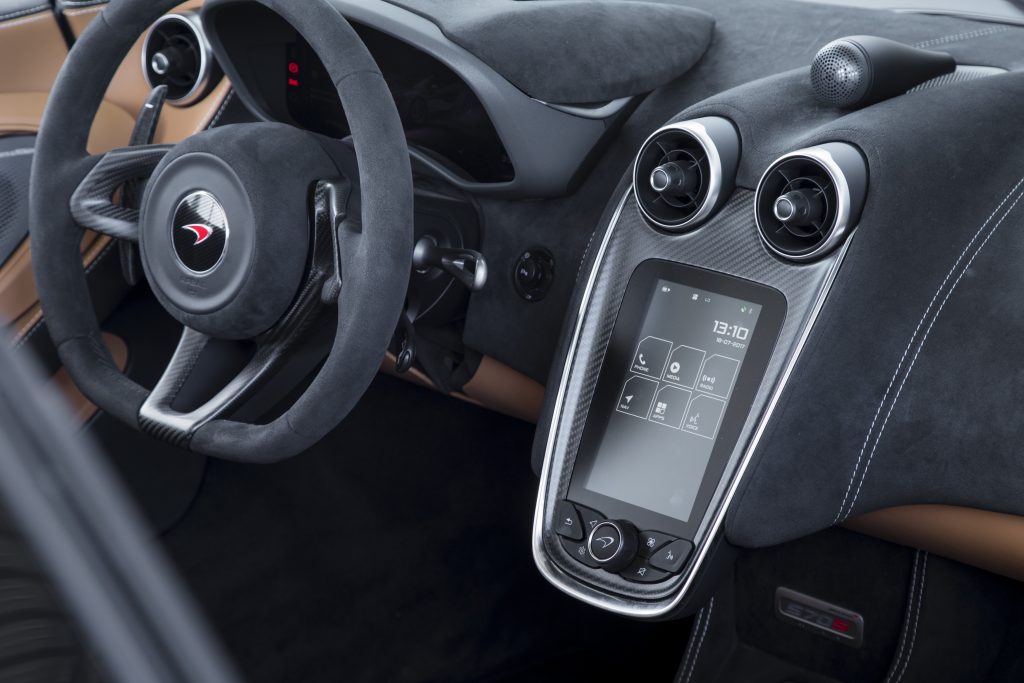
Summary.
Like all of its ilk, there is simply no way to rationalise the purchase of the McLaren 570S Spider, and trying to do so is to completely miss the point.
If you’ve worked hard all your working life and managed to stash enough away in the bank to afford such a car, it’s precisely what you deserve as a reward. Inevitably, you’ll attract the occasional “mid-life crisis” jibes, but only from people who don’t appreciate the many and considerable virtues of this outstanding and characterful car.